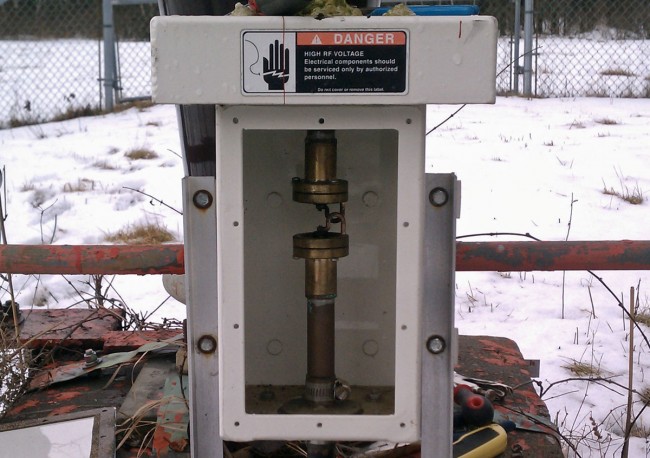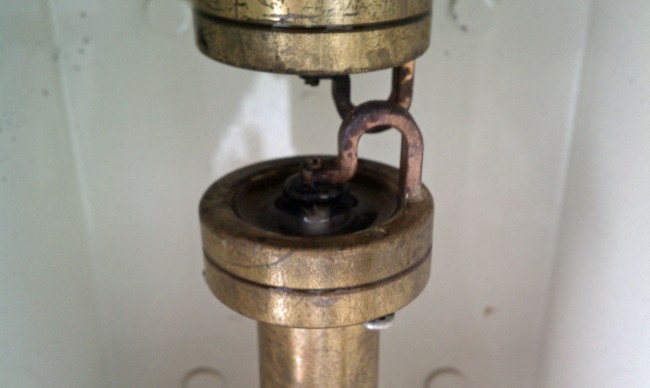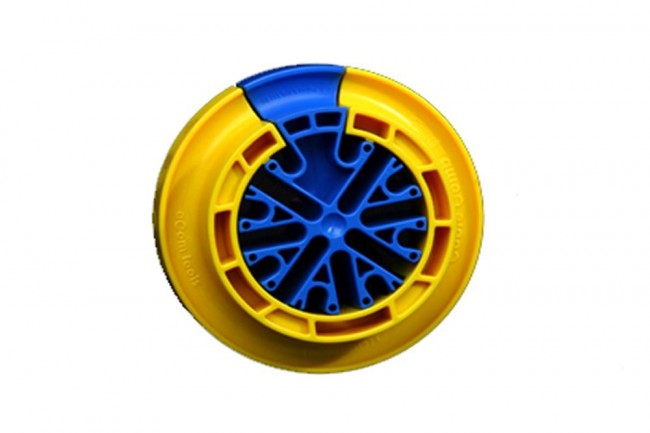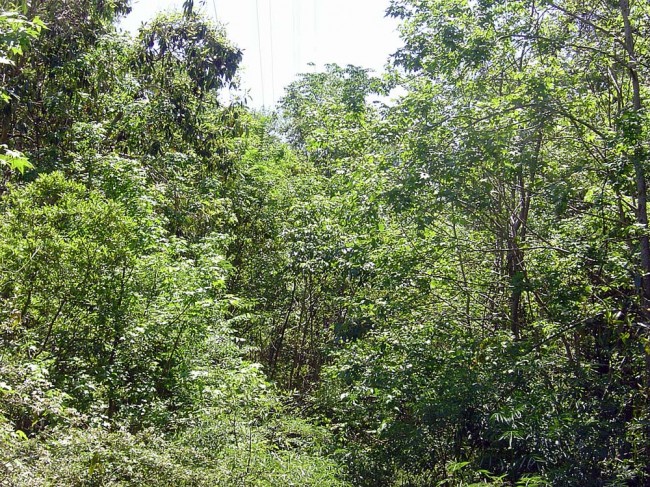Periodic attention is required for most satellite receive-only earth stations. This particular dish sticks up above the roof line of a two-story building. It acts as a big sail and sometimes, after a particular wind event, it gets slightly off of its intended satellite, AMC-8.
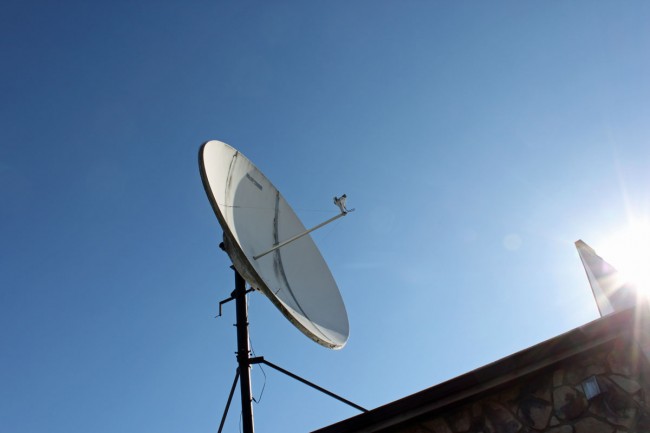
The real issue is doing nothing with the feed horn assembly, as it hangs way up in the air right over the edge of the roof. An extension ladder does not work, nor does a step ladder on the roof. Thus, we had to call a bucket truck to come and replace the LNB. Naturally, this work is being done on one of the coldest days of the year (so far). Temperatures at the start were 4° F or -15° C, which made the hydraulics in the bucket truck a bit reluctant to work.
When the dish was installed in 2000 or so, I swung it so the feed horn assembly was over the roof to work on it. This did not allow me to effectively check the feed horn polarization. With the bucket truck and a good satellite aiming device, I was able to find the correct polarization for the transponders in use by this station.
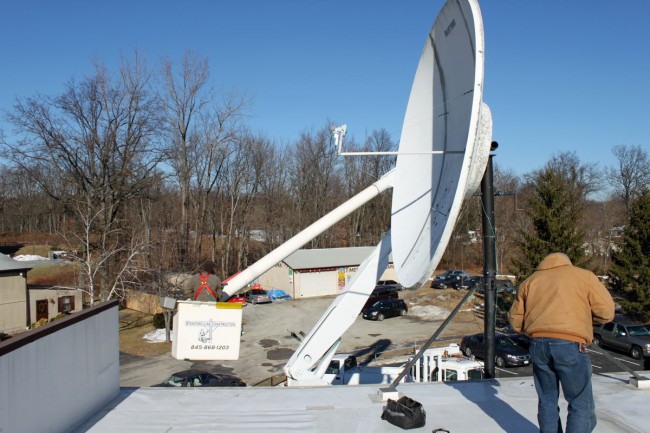
The old LNB was an original California Amplifiers PLL LNB from the mid 1990’s. The temperature was 35° K, which is kind of high these days. It was replaced by a Norsat C band PLL LNB with a 20° K temperature.
The satellite aiming tool used is an AI Turbo S2 by Dawn Satellite. This unit has software profiles for each satellite which can be updated over the internet. The 139° W satellite neighborhood is pretty crowded and it is easy to find yourself looking at the wrong bird. Using the aiming tool prevents that from happening, as it tells the user exactly which satellite it is receiving.

If this is a new installation, using Satellite Finder makes the rough aiming much easier.
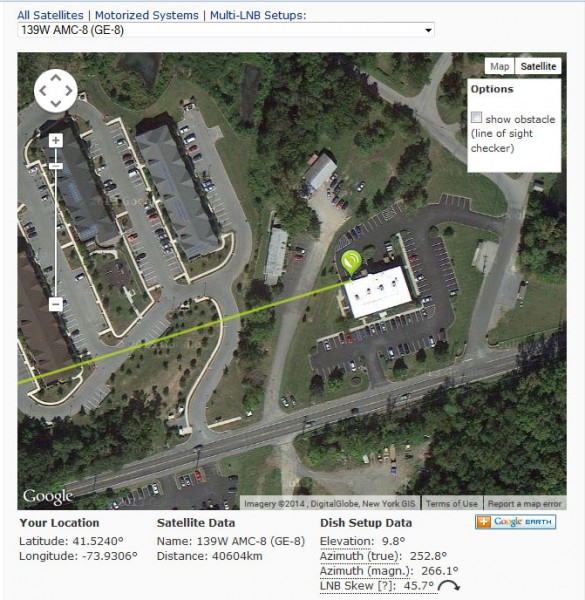
Also, it one were interested in being very thorough, consulting the SES center of box page will give the best aiming window times. To be honest, I have never found this to make much difference.

The end result, Eb/No is 17.5 with an AG of 54. All in all, a happy satellite receiver.


